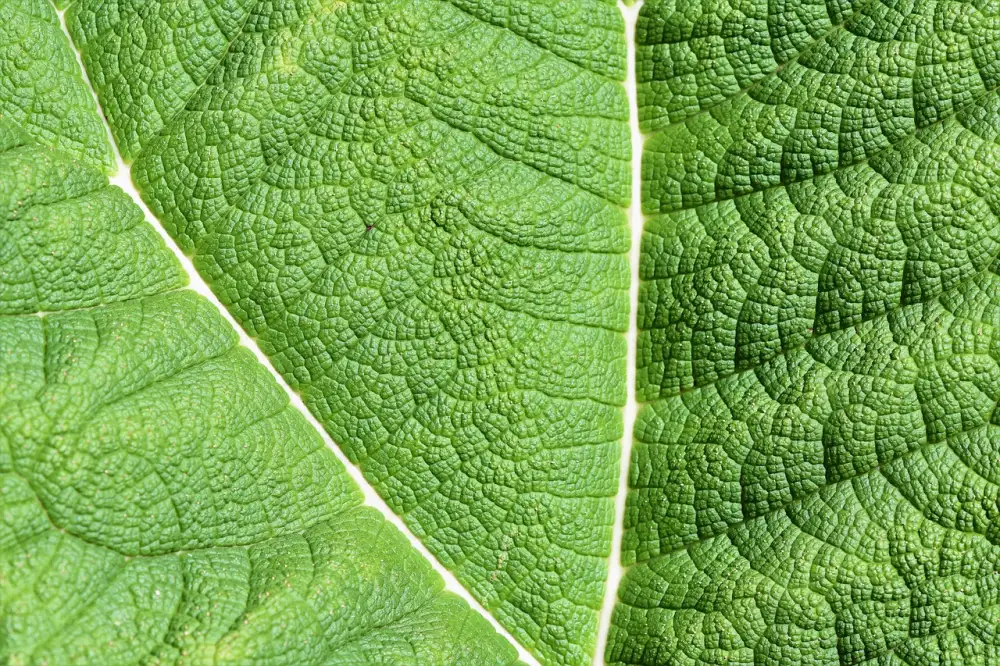Harvesting Rhubarb: When is the Best Time to Pick this Tangy Delight?

Rhubarb, with its vibrant red stalks and tangy flavor, is a delightful addition to any kitchen. But when is the best time to harvest this versatile plant? Understanding the process of rhubarb harvesting is crucial to ensure you pick it at its peak. In this article, we will explore the growth cycle of rhubarb, signs that indicate it's ready for harvest, and tips for maximizing your yield. So let's dive in and discover the secrets of harvesting rhubarb!
Understanding the Growth Cycle of Rhubarb
To successfully harvest rhubarb, it's important to understand its growth cycle. Rhubarb is a perennial plant that goes through distinct stages throughout the year. In early spring, as temperatures start to rise, rhubarb begins to emerge from its winter dormancy.
During this time, you'll notice small red or green shoots pushing up from the ground. These shoots will quickly grow into large, leafy plants with thick stalks. It's crucial not to harvest any rhubarb during this initial growth phase as it needs time to establish strong roots and gather nutrients.
As the season progresses, the rhubarb leaves will continue to expand and provide energy for the plant. The stalks will also grow thicker and become more vibrant in color. This is a sign that the plant is maturing and getting ready for harvest.
It's important to note that rhubarb should not be harvested during its first year of growth. This allows the plant to establish itself fully and ensures a healthier crop in subsequent years. Once your rhubarb plant reaches its second year, you can begin harvesting.
By understanding the growth cycle of rhubarb and giving it time to mature properly, you'll be able to enjoy a bountiful harvest of this tangy delight for years to come.
Signs that Rhubarb is Ready for Harvest
Before you start harvesting rhubarb, it's important to know when the stalks are ready to be picked. Here are some signs that indicate your rhubarb is ripe and ready for harvest:
1. Size: Mature rhubarb stalks are typically around 10-15 inches long and about an inch in diameter. If your stalks have reached this size, it's a good indication that they are ready to be harvested.
2. Color: Look for bright and vibrant colored stalks. The ideal color of rhubarb stalks varies depending on the variety, but generally, they should be a deep red or pink hue. Avoid picking stalks that are still green as they may not be fully matured.
3. Firmness: Gently squeeze the stalks to check their firmness. Ripe rhubarb should feel firm and crisp, indicating that it is ready to be harvested. If the stalks feel soft or mushy, they may be overripe and past their prime.
4. Leaf development: Take note of the leaves attached to the stalks. Healthy rhubarb plants will have large, lush leaves with no signs of wilting or yellowing. If the leaves appear healthy, it's a good indication that the plant is thriving and producing mature stalks.
Keep these signs in mind when assessing your rhubarb plants for harvest readiness. Remember that it's better to wait until the stalks meet these criteria rather than picking them too early when they may lack flavor and sweetness.
Best Time of Year to Harvest Rhubarb
The best time of year to harvest rhubarb is in the spring, typically from April to June, depending on your location. This is when the plant is at its peak growth and the stalks are firm and vibrant in color. It's important to wait until the plant has reached maturity before harvesting, which usually takes about two years after planting. Harvesting too early can weaken the plant and reduce future yields. So, be patient and allow your rhubarb to establish itself before indulging in its tangy delights.
How to Properly Harvest Rhubarb Stalks
To properly harvest rhubarb stalks, it's important to follow a few simple steps. First, make sure the stalks are thick and firm before harvesting. Gently grasp the stalk near the base and give it a firm tug. The stalk should easily separate from the plant.
Next, use a sharp knife or garden shears to cut the stalk off at ground level. Be careful not to damage any neighboring stalks or the crown of the plant. Avoid pulling or twisting the stalk, as this can harm the plant.
After harvesting, remove any leaves attached to the stalks. Rhubarb leaves are toxic and should never be consumed. Trim off any damaged or discolored portions of the stalk as well.
Remember to leave at least two-thirds of the healthy stalks on each plant when harvesting. This ensures that there will be enough foliage left for photosynthesis and future growth.
By following these guidelines, you'll be able to harvest rhubarb properly and enjoy its tangy delight in your favorite recipes.
Tips for Maximizing Rhubarb Yield
To maximize your rhubarb yield, there are a few tips you can follow. First, make sure to remove any flower stalks that appear. These stalks can divert energy away from the main plant and reduce the overall yield. Additionally, regularly fertilize your rhubarb plants with a balanced fertilizer to promote healthy growth.
Another tip is to avoid overharvesting. While it may be tempting to pick all the rhubarb stalks at once, it's important to leave some behind. By only harvesting about one-third of the stalks at a time, you allow the plant to continue producing throughout the season.
Furthermore, remember to always harvest rhubarb stalks by pulling them gently from the base rather than cutting them. This helps stimulate new growth and ensures a continuous supply of fresh rhubarb.
Lastly, consider dividing your rhubarb plants every few years. This process involves digging up the plant and separating it into smaller sections before replanting them. Dividing rhubarb not only helps control its size but also encourages better yield by rejuvenating older plants.
By following these tips, you can maximize your rhubarb yield and enjoy an abundance of this tangy delight in your recipes.
Storing and Preserving Freshly Harvested Rhubarb
Once you have harvested your rhubarb, it's important to store and preserve it properly to ensure its freshness and flavor. Here are some tips for storing and preserving freshly harvested rhubarb:
Storing Fresh Rhubarb
- Trim the stalks: Remove any leaves from the stalks as they are toxic. Cut off the ends of the stalks and discard any damaged or discolored parts.
- Wash and dry: Rinse the stalks under cold water to remove any dirt or debris. Pat them dry with a clean kitchen towel.
- Refrigerate: Place the rhubarb stalks in a plastic bag or wrap them in a damp paper towel. Store them in the refrigerator crisper drawer, where they will stay fresh for up to two weeks.
Preserving Rhubarb for Long-Term Use
- Freeze for long-term storage: If you have more rhubarb than you can use within a couple of weeks, consider freezing it for later use. Cut the stalks into small pieces and blanch them in boiling water for 1-2 minutes. Transfer them to an ice bath to cool quickly, then drain and pack them into freezer-safe bags or containers.
- Make rhubarb compote or sauce: Another great way to preserve rhubarb is by making compote or sauce. Simply chop the stalks into small pieces, cook them with sugar and a bit of water until soft, then let it cool before storing in jars in the refrigerator.
Enjoying Your Rhubarb Harvest
By following these storage and preservation methods, you can enjoy your freshly harvested rhubarb throughout the year, even when it's out of season.
Now that you have successfully harvested your rhubarb, it's time to enjoy the tangy delight in various culinary creations. From pies and tarts to jams and sauces, there are countless ways to savor the unique flavor of rhubarb.
Rhubarb Recipe Ideas
- Classic Rhubarb Pie: The tartness of the rhubarb pairs perfectly with a sweet crust and a dollop of whipped cream or vanilla ice cream on top.
- Rhubarb Crumble or Crisp: For a warm and comforting dessert.
- Rhubarb Chutney or Sauce: The tartness adds a refreshing twist to grilled meats or roasted vegetables.
- Frozen Rhubarb: Use in pies or smoothies.
- Homemade Rhubarb Jam: Enjoy throughout the year.
Happy Harvesting!
Remember, harvesting rhubarb is not just about enjoying its delicious taste but also about embracing the joy of growing your own food. So take pride in your harvest and share your culinary creations with family and friends.
Published: 23. 12. 2023
Category: Food



